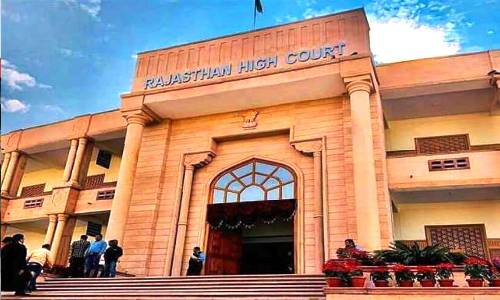
Case Title: Baker Hughes Asia Pacific Limited v. Union of India
The Rajasthan High Court ruled that the GST circular dated 31.03.2020, which is contrary to the parent legislation, cannot be used to dismiss a legitimate claim for an accumulated ITC refund.
By ignoring the circular dated 31.03.2020, the division bench of Justice Sandeep Mehta and Justice Vinod Kumar Bharwani concluded that the supplying dealer would be entitled to a refund of accumulated unutilized tax credit under Section 54 (3) (ii) of the CGST Act regardless of whether the input and output supplies are the same.
The petitioner/assessee entered into a development contract with the company Vedanta Limited, which has been granted exclusive rights by the Government of India to conduct petroleum operations in Rajasthan Block RJ-ON-90/1. A Production Sharing Contract was signed between Vedanta and the Central Government for this purpose. Vedanta entered into a subcontract with the petitioner for the supply of the articles to procure essential goods, materials, and equipment required for carrying out petroleum exploration and production operations. The contract required the petitioner to obtain goods, materials, and equipment from India and abroad for onward shipment to Vedanta. The petitioner was registered under the CGST and RGST Acts and claims to have been filing returns and paying taxes to the Central or State Government regularly. The petitioner obtained goods from authorised vendors at GST rates ranging from 5% to 28% to carry out the contract.
According to the petitioner, the government issued a notification on June 28, 2017, establishing an effective GST rate of 5% on all supplies made for specific operations subject to certain conditions. The notification was issued to reduce the tax burden, and the cascading effect, and to help the oil and gas industry. The notification included a pre-requisite condition for obtaining the 5% GST concessional rate. The person who clears the transfer of goods must provide a certificate from the Directorate General of Hydrocarbons, Ministry of Petroleum and Natural Gas, according to the condition.
According to the petitioner, the government issued a notification on June 28, 2017, establishing an effective GST rate of 5% on all supplies made for specific operations subject to certain conditions. The notification was issued to reduce the tax burden, and the cascading effect, and to help the oil and gas industry. The notification included a pre-requisite condition for obtaining the 5% GST concessional rate. The person who clears the transfer of goods must provide a certificate from the Directorate General of Hydrocarbons, Ministry of Petroleum and Natural Gas, according to the condition.
The petitioner was named as the supplier on the essentiality certificate, and Vedanta was named as the recipient. Under the notification dated 28.06.2017, the petitioner obtained the goods by paying GST ranging from 5% to 28% (Input Tax) and supplied them to Vedanta at the fixed GST rate of 5% (Output Tax).
It was claimed that the petitioner's ITC was significantly greater than its output tax liability. As a result, after fully utilising the credit against the Output Tax Liability. A significant portion of the input tax credit accrued in favour of the petitioner due to the difference in GST rates, which were significantly higher than the rate of output tax. The petitioner claimed that it was entitled to a refund under the CGST and RGST Acts' inverted duty structure.
The petitioner claims that she received a notice under FORM-GST-RFD-08 dated 19.12.2020 requiring her to show cause why the refund claim should not be rejected in light of the CBIC's Circular dated 31.03.2020. The circular states that a refund under the inverted duty structure under Section 54(3)(ii) of the CGST Act is not available where the input and output supplies are the same.
The bone of contention between the parties is Clause 3.2 of the Circular dated 31.03.2020. According to the clause, "In such cases, despite attracting different tax rates at different points in time, the input and output are not covered by the provisions of clause (ii) of sub-section (3) of section 54 of the CGST Act. It is hereby clarified that the refund of accumulated ITC under clause (ii) of sub-section (3) of section 54 of the CGST Act does not apply when the input and output supplies are the same."
Circular No. 125/44/2019-GST - CBEC-20/16/04/18-GST was cited by the petitioner. According to the circular, a refund under the inverted duty structure will be allowed when inputs are procured at the normal GST rate and output supplies are made at a lower GST rate due to the lower rate notification in effect.
The petitioner argued that statutory circulars, as subordinate legislation, cannot supersede or override the parent statute. The circular, to the extent that it disallowed Input Tax Credit under the Inverted Duty Structure where input and output supplies are the same, is per se illegal and should be quashed while accepting the writ petition.
The department argued that the petitioner was not entitled to the refund claim for ITC in light of the circular dated 31.03.2020 and requested that the writ petition be dismissed.
The court noted that Section 54(3)(ii) of the CGST Act is completely clear and does not make any exceptions to the fact that the Input Tax Credit under the Inverted Tax Structure is not applicable where the input and output goods are identical.
"The claim for refund of ITC filed by the petitioner was for a period before the issuance of the circular dated 31.03.2020. Consequently, rejection of the petitioner's claim for an accumulated input tax credit by the respondent, Deputy Commissioner, State Tax, Circle Barmer, with reference to para 3 of the Circular dated 31.03.2020, is invalid on the face of the record and cannot be sustained," the court said.

